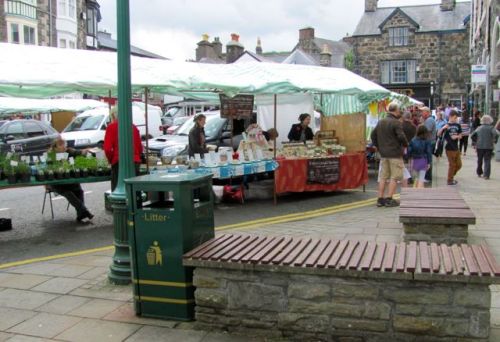Sorry. Not sorry…
 The first of my ‘recipes I’ve never used before’ (see previous post) has come from a book I have had for years. Had for years and used remorselessly – though not for some time. It was published in 1987 to accompany a TV series, and it’s by one of my all-time favourite writers: Claudia Roden. It’s the illustrated edition of her wonderful Mediterranean Food.
The first of my ‘recipes I’ve never used before’ (see previous post) has come from a book I have had for years. Had for years and used remorselessly – though not for some time. It was published in 1987 to accompany a TV series, and it’s by one of my all-time favourite writers: Claudia Roden. It’s the illustrated edition of her wonderful Mediterranean Food.
Boxing Day, and I was invited to a friend’s house for lunch. But… he was cooking a bouillabaisse, and would I do the accompaniments? After all, my name is about as Provençal as you can get: I’m actually a small nativity figure, traditional at this time of year, so helping with a typically Provençal dish should be no problem. ‘What did he need?’ I asked: oh, you know, the aïoli, the rouille, some homemade bread would be good. Aïoli, no problem. Homebaked sourdough, no problem (well, there was, because I managed to kill my starter, but that’s another story). Rouille? Eaten it, or rather slurped it into a fish soup. Not made it.
I had my first task!
I thought I knew what I was getting into: a bread-based purée, flavoured with garlic and cayenne or chillis, ideal for thickening a soup or a rather liquid stew as well as adding flavour. But that’s when the problems started. Digging around, I found a split, a schism, an existential crisis. What is, or what is not, a rouille? Is it a flavoured mayo, according to Wikipedia and even Anthony Bourdain? My battered old Cuisine du Terroir is unequivocal:
‘The accompaniment to certain Provençal soups, including the legendary bouillabaisse. The recipe given […] is a reminder that the modern tendency to make a sort of aïoli with chillis is historically incorrect.’
Well, I’m not going to go against that. Why would you want another mayo-based accompaniment, anyway? And I’m not missing out on the aïoli, which I can eat by the bucketfull. I turned to Claudia, and then I discovered schism number two, amongst the traditional bread-based rouille makers. Essentially, it’s about technology. Do you use a blender, or do you make it a bit like a mayo, pounding the bread in a mortar and adding the oil gradually?
Er, for me there’s no debate. Especially on Boxing Day morning. Blender it is. Please. My comment in Cuisine (mortar and pestle, natch) reads ‘seriously, guys’.
So I settled down with Claudia, and inevitably had to adapt the recipe. And this is what I got:
It was absolutely, four star, zappo, amazing, DELICIOUS.
Now. I had to do some adapting. First, you’re supposed to cut the crusts off the bread. Owing to the starter crisis, all I had was bread with crusts. If I’d cut the crusts off I’d have had about a teaspoon of bread. So I reduced the crusts to the finest possible breadcrumbs before starting. How much, though? The recipe says ‘four slices’. Well, in the late 80s a slice of bread was about 25g, so I went with 100g.
I put my breadcrumbs in a bowl with crushed garlic, a teaspoon of paprika and a pinch of cayenne, five tablespoons of olive oil and a squeezette of tomato purée (controversial, that, but hey, I was going to be wielding a blender, I laugh in the face of controversy). I had some veg stock ready to let it down – should have been fish stock from the bouillabaisse, but that was five miles away – and mixed it all together in the bowl first. My stick blender did a brilliant job, much better than my stand blender – yes, I did try.
The taste? As noted above – fabulous. Yes, I’m sure it would have been smoother if I’d not used crusted bread, but at the same time I’m also sure that my home-made crusted bread was more tasty than the boiled baby’s blanket which passed for bread in the 1980s, and still does in many supermarkets today.
Here’s a link to Claudia’s original recipe, published with her bouillabaisse as one of the Guardian’s ‘20 best French recipes‘. Entirely justified.























 owed this with a Ceasar Salad. I know it may seem boring, but I reckon that’s a good test: the dressing, the quality of the chicken and the Parmesan, even the lettuce – I’ve had some horrors over the past few years. This was a good one. In fact, this was a very good one. The chicken was perfect, and there was plenty of it – another good test: one anaemic, tasteless slice doth not a Caesar Salad make.
owed this with a Ceasar Salad. I know it may seem boring, but I reckon that’s a good test: the dressing, the quality of the chicken and the Parmesan, even the lettuce – I’ve had some horrors over the past few years. This was a good one. In fact, this was a very good one. The chicken was perfect, and there was plenty of it – another good test: one anaemic, tasteless slice doth not a Caesar Salad make.


